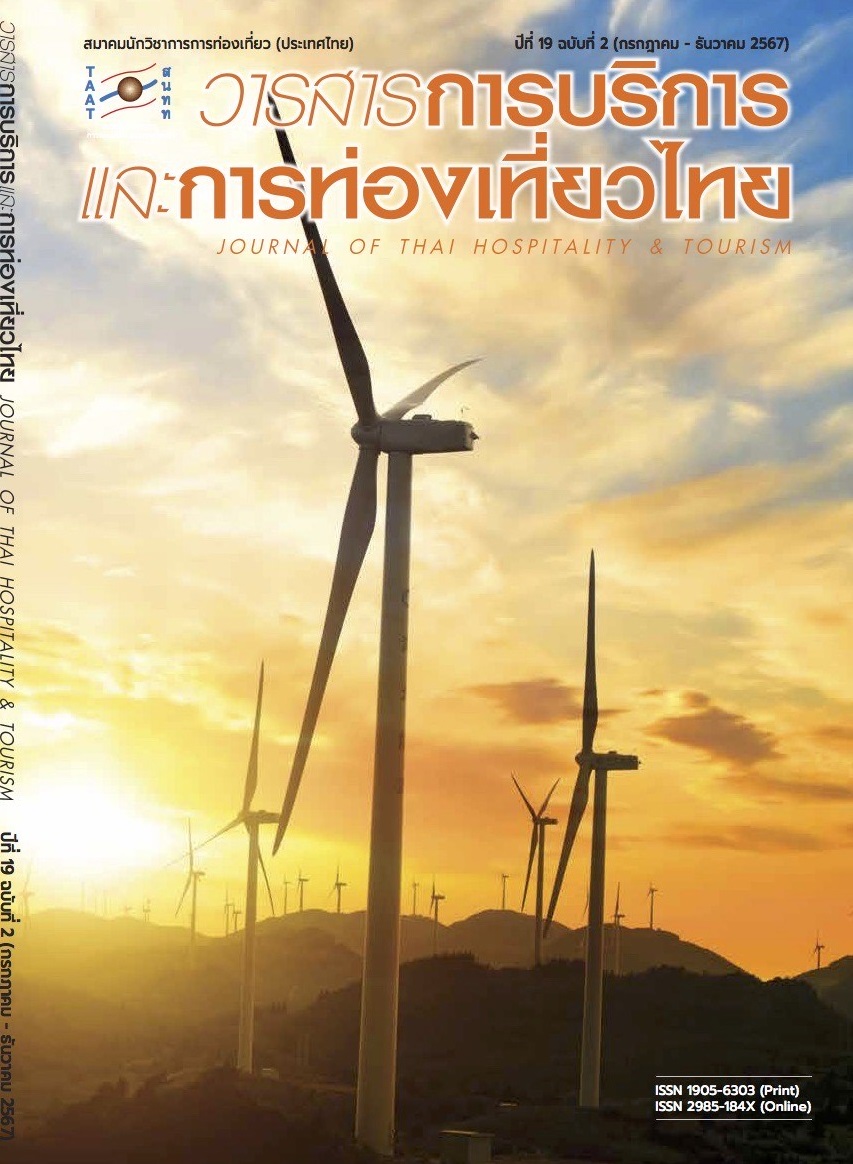Analysis of the Factors Affecting the Long-term Survivability of Chiang Mai Restaurants Using Analytic Hierarchy Process (AHP)
Main Article Content
Abstract
During the COVID–19 pandemic, ensuring the sustainability of restaurants has become a pressing concern for owners around the world. To investigate the factors that allowed renowned restaurants in Chiang Mai, Thailand, to survive the crisis, we conducted interviews with 15 experienced restaurant owners who have been in business for more than ten years. Using the Analytical Hierarchy Process (AHP), we asked them to identify the essential factors for their businesses' survival. Our analysis allowed us to determine the significance and weight of each factor. Our findings indicate that restaurant quality was the most significant factor with a score of 45.16%, followed by the adaptation factor with an importance weight of 26.79%. The least significant factor was government involvement, with a weight of 3.03%. We recommend that restaurateurs prioritize preserving the quality of their food and the restaurant's original concept while keeping costs manageable for long-term success. Relying too heavily on government assistance may not be a reliable strategy. Additionally, restaurant owners should focus on maintaining food quality and service, adapting to changing circumstances, prioritizing financial stability, and ensuring hygiene and safety. By using this information, restaurant owners can better navigate crises and successfully run their businesses in the future. Overall, our study's results will be useful for entrepreneurs and stakeholders in the food and beverage industry as they provide insights into the survival factors that are critical to running a successful SME restaurant business in Chiang Mai.
Article Details

This work is licensed under a Creative Commons Attribution-NonCommercial-NoDerivatives 4.0 International License.
References
Chuyingsakulthip, C. (2021). The Survival of Restaurants during Covid–19 Pandemic in Thailand. Mahidol University.
Department of Disease Control. (2022). Policy Responses to Covid–19. Ministry of Public Health.
Dong, Q. & Saaty, T. (2014). An Analytical Hierarchy Process Model of Group Consensus. Journal of Systems Science and Systems Engineering, 23, 362–374.
Halpern-Lanz, L. & Szymanski, S. (2020). Adaptation – Restaurants Maneuver in Response to Covid–19. Boston Hospitality Review, 8.
Karniouchina, E., Sarangee, K., Theokary, C. & Kübler, R. (2022). The Impact of the Covid–19 Pandemic on Restaurant Resilience: Lessons, Generalizations, and Ideas for Future Research. Service Science, 14(5).
Kulshrestha, K. & Sharma, G. (2022). From Restaurant to Cloud Kitchen: Survival of the Fittest during Covid–19: An Empirical Examination. Technological Forecasting and Social Change, 179, 121629.
Parsa, H., Self, J., Njite, D. & King, T. (2005). Why Restaurants Fail. Cornell Hotel and Restaurant Administration Quarterly, 46, 304–322.
Saaty, T. L. (1977). A Scaling Method for Priorities in Hierarchical Structures. Journal of Mathematical Psychology, 15(3), 234–281.
Sheng, J. (2019). Being Active in Online Communications: Firm Responsiveness and Customer Engagement Behaviour. Journal of Interactive Marketing, 46, 40–51.
Suksomwat, P. (2022). An Effect Caused by the Outbreak of Coronavirus (Covid–19) and the Survival Strategies of Food & Beverage Business. Management Science Review, 24(1), 163–171.


